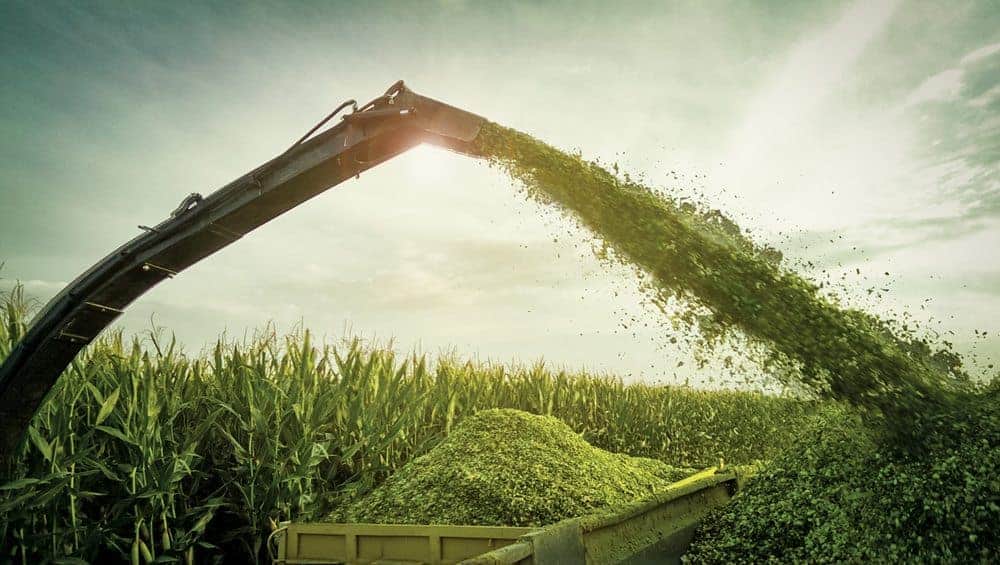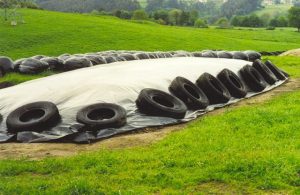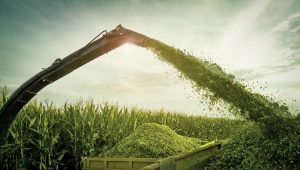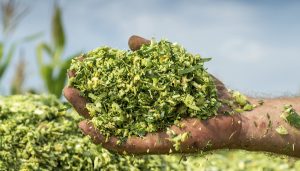
Silage Quality And Feeding
Silage
Getting green fodder throughout the year is a challenging task as in India it is fodder cultivation is mostly dependent on rains. Silage making is the most important, simple but innovative way to preserve the green fodder. Farmers have a misunderstanding that silage should be prepared only when fodder is available in plenty. For the following reasons, farmers should now abandon daily cut-n-feed system but once the fodder crop is in the right stage it should be preserved as silage:
- Labour requirement is low as there is no need to harvest the fodder requirements daily.
- When fodder is harvested daily the nutrient quality differs; initially moisture content is high but TDN is high and in later age moisture content is low and TDN is also low. This affects the quality of milk, especially fat and SNF content
- For silage, the fodder crop can be harvested when the dry matter and TDN contents are optimum. This means farmers can reap better biomass per acre land
- The land is released for the preparation and cultivation of the next round of crops.
- The feeding schedule can be followed as the fodder is available for offering and not dependent on daily harvesting.
- Fodder can be preserved for emergencies, such as crop failure and the emergencies
Other Advantages:
- We can feed green fodder to cows throughout the year.
- Cost of production of silage is very low.
- Silage maintains the nutritive value throughout the year.
- The process of ensilage enhances the taste and flavour of the fodder and palatability increases.
Silos
A silo is a place or pit of making silage. The farmer should decide a suitable type and design depending upon the quantity to be stored, availability of space, manpower or machinery. The dimensions of length, width and depth/height are also decided based on silage requirements. Approximately 20-25 kg can be stored in one cubic foot after good pressing. Pressing the fresh fodder helps in removing the trapped air and that results in good silage.
For example, a trench type pit may be suitable when a large area is available, quantity is large and the tractor is available for pressing while feeding. A bunker could be below ground level of half below ground level. If it is above ground level then the open sides will have to be closed by wooden planks by arranging them one over the other with their ends inserted in slots on both the sides. Silos can be fabricated or constructed as towers when the pressing will have to be done mechanically. Silos in the form of polythene tubes or bags have become more common as these offer wide choices for storing and also yield better quality of silage.

Silage Preparation
- Quantity: The quantity of silage to be preserved is calculated on the basis of quantity required per animal and the number of animals on the farm etc. For example, for a farm with 10 Adult animals and for feeding 20 kg of silage, 200 kg of silage would be needed every day.

- Mechanical Harvesting
- Reaper –Mechanical fodder harvesting helps to save time and cost of labour at a commercial dairy farm. Reaper is a tractor operated machine that harvests the crop 1 – 2 inches from the ground and it can harvest one acre per hour.
- Chopper- It is an economical machine powered directly by the tractor power-take-off shaft and used to perform high-quality cutting that is without losing nutrients and moisture of plants. Lengths of maize cuttings can be adjusted as per requirement.
- Harvesting: Crops having a good percentage of sugar and appropriate moisture (35-40% dry matter; 65-60% moisture) are good for silage making. Crops like maize, jawar, bajra, Napier, bajra and oat are most suitable for silage making. Crops should be harvested at the pre-flowering to flowering stage.
- Preparation: It can be made from maize fodder that is after harvesting it at ‘milking stage’ that is achieved between 65-75 days after sowing or it may also be prepared from corn along with cobs. Milking stage is when the harvested corn grain actually yields a milky-exudates when squeezed or pressed.
- Moisture Level: This is the most important factor to be considered for silage preparation. The moisture level of 65-70% is recommended on the day of filling. To get fodder at an appropriate moisture level, irrigation of the crop should be stopped at least one week before harvesting. Alternately the harvest should be open-dried for 12-24 hours in the shed, also termed wilting.
- Chopping: Fodder must be chopped into pieces of one-inch length. Now, machines are available to chop the fodder in the field and to simultaneously load on to the tractor.
- Pressing and Coverage: This is the most important step in silage making. Compact the forage as tightly as possible, to remove entrapped air. Use sharp knives at the harvest to enhance packing and aim for a fill rate of 1 minute/ton and a packing density of at least 700 kg/m. Complete the entire storage quickly within 1-2 days. Cover the silage with polythene sheet properly and put some weight, such as used tyres, stones, etc. to maintain the pressure.

Different varieties of additives are available in the market. These additives help in improving nutrient quality by altering the rate and amount of acid production. But, be careful, the imported inoculants do not make good silage in a tropical climate. Better look for inoculant made from the indigenous culture.
Opening the Silo Pits
The opening of silage is very important as it would get exposed to air and that may lead to aerobic fermentation. To avoid this, silo should be opened from one end so that a minimum surface area is exposed to the environment.
There are two simple tests to judge the quality of silage while opening: (a) insert your hand in the silage, it should not be hot and (b) It should have sweet and not rancid smell. A vinegar odour is associated with high levels of acetic acid whereas alcoholic odour indicates fermentation by yeast. Ideally, it should have mild, pleasantly acidic, sour aroma which indicates normal lactic acid fermentation relished by dairy animals.
Feeding enough silage and lowering the feeding of concentrate feed is the key to profitable dairy farming and better animal health.
Read: Why the Cultivation of Azolla is gaining the interest of cattle farmers?
